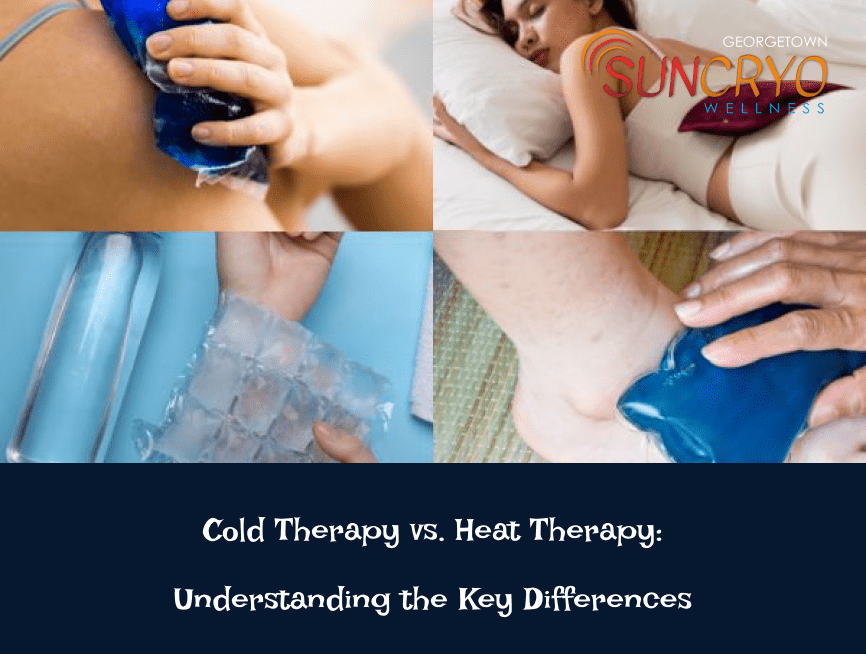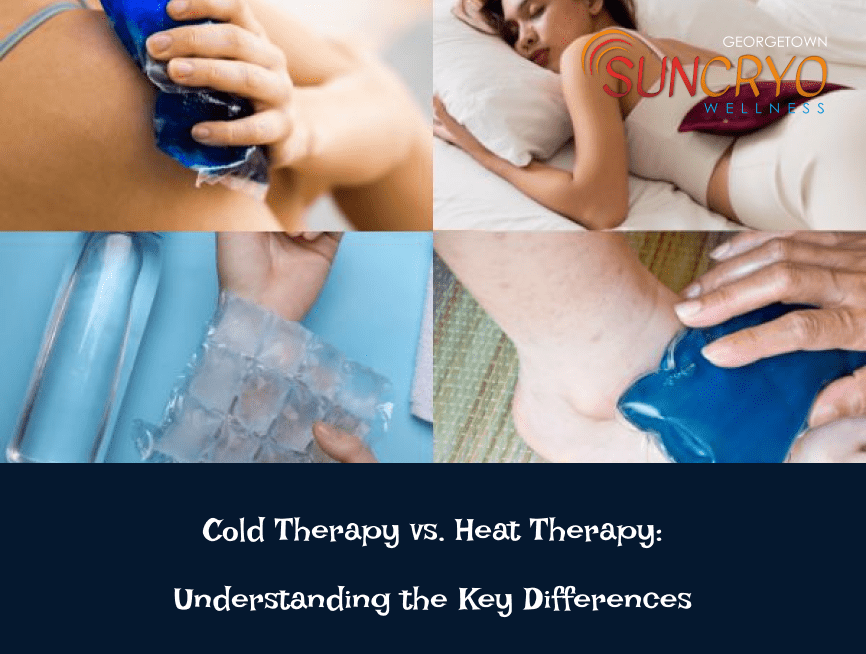Cold Therapy vs. Heat Therapy

When managing pain or aiding recovery from injuries, cold therapy, and heat therapy are two widely employed techniques with distinctive mechanisms and effects on the body. Understanding the differences between these two therapies is crucial to choosing the most effective treatment for various conditions. In this comprehensive guide, we’ll delve deep into the specifics of cold therapy and heat therapy, their applications, benefits, and the scenarios where one might be more beneficial than the other.
Cold Therapy: Exploring Its Benefits and Applications
How Does Cold Therapy Work?
Cold therapy, also known as cryotherapy, involves applying cold temperatures to the body to constrict blood vessels and reduce blood flow to an injured area. This constriction helps alleviate pain, swelling, and inflammation by slowing down nerve impulses and decreasing tissue metabolism. It’s commonly used immediately after an injury to control swelling and reduce pain sensations.
Applications of Cold Therapy
Cold therapy is frequently recommended for acute injuries like sprains, strains, bruises, and minor burns. Applying cold packs or ice to the affected area within the initial 24 to 48 hours post-injury can effectively manage pain and minimize swelling.
Benefits of Cold Therapy
- Pain Relief: By numbing the affected area, cold therapy can significantly reduce discomfort and pain.
- Reduction of Swelling: Cold applications constrict blood vessels, reducing swelling and inflammation.
- Speedy Recovery: Its ability to minimize tissue damage often accelerates the healing process.
Heat Therapy: Understanding Its Mechanisms and Uses
How Does Heat Therapy Work?
Heat therapy, or thermotherapy, involves applying heat to the body to increase blood flow and relax muscles. This increased blood circulation delivers nutrients and oxygen to the affected area, promoting healing and reducing stiffness.
Applications of Heat Therapy
Heat therapy is commonly used for chronic conditions such as muscle stiffness, arthritis, and muscle spasms. It helps loosen tissues and stimulate blood flow, alleviating pain and enhancing flexibility.
Benefits of Heat Therapy
- Muscle Relaxation: Heat therapy can soothe and relax muscles, reducing spasms and stiffness.
- Improved Circulation: Increased blood flow helps deliver essential nutrients to the affected area, aiding in the healing process.
- Pain Relief: By increasing tissue elasticity, heat therapy diminishes discomfort and pain.
Cold Therapy vs. Heat Therapy: Which One to Choose?
When to Use Cold Therapy?
- Immediate Injury: Cold therapy is most effective during the initial 24 to 48 hours after an injury to reduce swelling and manage pain.
- Acute Pain: For sudden injuries like sprains, strains, or bruises, cold therapy is the go-to treatment for immediate relief.
When to Use Heat Therapy?
- Chronic Pain: Heat therapy is more suitable for chronic conditions like arthritis or muscle stiffness.
- Muscle Relaxation: It’s beneficial for muscle relaxation and reducing stiffness.
Conclusion
In summary, both cold therapy and heat therapy offer unique benefits and applications based on the type of injury or condition. While cold therapy is optimal for acute injuries to reduce swelling and manage pain, heat therapy excels in chronic conditions by promoting relaxation and improved circulation.
Understanding the differences between cold and heat therapy is crucial in determining the most suitable treatment for various ailments. Consulting with a healthcare professional for personalized advice regarding the appropriate therapy based on the specific injury or condition is always recommended.

